April Short Fuses — Materia Critica
Each month, our arts critics — music, book, theater, dance, television, film, and visual arts — fire off a few brief reviews.
Books
I was very moved by this story of a man dedicated to music, racial equality, and spiritual uplift.
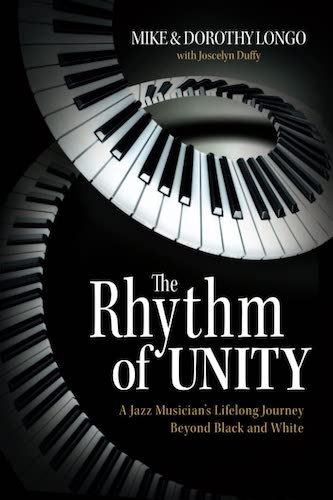 Mike & Dorothy Longo’s The Rhythm of Unity. A Jazz Musician’s Lifelong Journey Beyond Black and White (Redwood Publishing) is an odd sort of book. Pianist/composer/educator Mike Longo had finished writing most of his memoir before his March 2020 death. His wife Dorothy undertook to complete his work and came up with a volume that includes her own narrative, scores of tribute quotes about Longo, and sidebars that could either have been omitted or included in footnotes as an addendum. Still, despite the home-grown quality of The Rhythm of Unity, I was very moved by this story of a man dedicated to music, racial equality, and spiritual uplift.
Mike & Dorothy Longo’s The Rhythm of Unity. A Jazz Musician’s Lifelong Journey Beyond Black and White (Redwood Publishing) is an odd sort of book. Pianist/composer/educator Mike Longo had finished writing most of his memoir before his March 2020 death. His wife Dorothy undertook to complete his work and came up with a volume that includes her own narrative, scores of tribute quotes about Longo, and sidebars that could either have been omitted or included in footnotes as an addendum. Still, despite the home-grown quality of The Rhythm of Unity, I was very moved by this story of a man dedicated to music, racial equality, and spiritual uplift.
The heart of the book is Longo’s first-person narrative of his career, especially his longtime musical and personal relationship with mentor and guiding spirit Dizzy Gillespie, with whom he became a fellow traveler in the Baháʼí Faith. A white man, Longo was well aware that his race gave him an advantage; he stood up against racism wherever he encountered it, often at personal sacrifice. He forged deep relationships with Gillespie, James Moody, and other Black musicians that lasted until his death at age 83.
Longo was a musical seeker and there’s a lot of discussion about how jazz works and on his own efforts to “get a groove” and stay in it. The discussion about Gillespie’s take on bebop’s polymetric and polyrhythmic foundations is especially interesting.
The book is an unabashed hagiography. The darker side of Longo’s character is left unexplored. My impression is not that details of any exploitative behavior by Longo are withheld; only that a couple of emotional “breakdowns” that led to withdrawal and fallow periods are not examined. However, while the reader might well be curious about Longo’s undoubtedly complex character, it’s folly to critique the book on this basis. The Rhythm of Unity was conceived as a tribute to Longo and, more broadly, to show how jazz can be an exemplar of racial comity and serve as the foundation of lives lived with integrity. At this, The Rhythm of Unity succeeds admirably.
— Steve Provizer
Chinese writer Yan Lianke’s novel Heart Sutra is a powerful, darkly comic study of deities defiled.
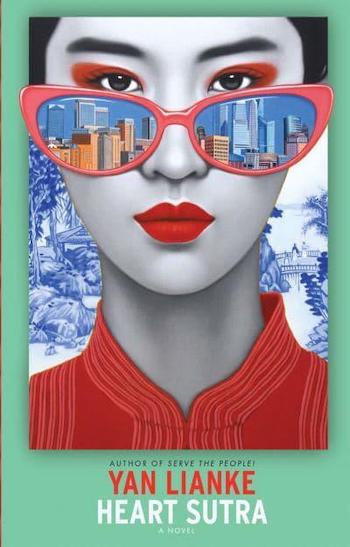 Award-winning Chinese writer Yan Lianke’s latest satire, Heart Sutra (Grove Atlantic) is a fascinating but peculiar fable about the throttling of religion in authoritarian China, where government higher-ups turn out to be the godlings who rule the world. According to his afterward, Lianke wanted “to write about the beauty and secret love that emerge when lightness and darkness meet — like the instant of mutual gazing, caressing, and kissing that occurs when an egg and a stone collide at high speed.” Power brokers, petty bureaucrats, and party officials are the story’s stones, and they survive the cozy crash empowered. The eggs don’t fare so well. It is no wonder that this book could not be published in China.
Award-winning Chinese writer Yan Lianke’s latest satire, Heart Sutra (Grove Atlantic) is a fascinating but peculiar fable about the throttling of religion in authoritarian China, where government higher-ups turn out to be the godlings who rule the world. According to his afterward, Lianke wanted “to write about the beauty and secret love that emerge when lightness and darkness meet — like the instant of mutual gazing, caressing, and kissing that occurs when an egg and a stone collide at high speed.” Power brokers, petty bureaucrats, and party officials are the story’s stones, and they survive the cozy crash empowered. The eggs don’t fare so well. It is no wonder that this book could not be published in China.
Set at the Religious Training Center on the campus of National Politics University in Beijing, the narrative revolves, a bit too often, around an obvious but forceful metaphor. Disciples of the major religions at the school — Buddhism, Daoism, Protestantism, Catholicism, and Islam (Judaism is among the excluded faiths) — have pledged to study together in peace. But the students and faculty take part, too eagerly, in highly competitive and lucrative bouts of tug-of-war, with shady wagers and social prestige riding on the outcomes. Will God smile upon the Catholics and give them the strength to whip the Daoists? Alongside this money-making scheme for the underfunded Center (masterminded by a slick-talking opportunist), Lianke sets up interlocking tales of innocence corrupted. The beautiful 18-year-old Buddhist jade nun Yahui falls in love with an earnest go-getter, Daoist Gu Mingzheng, who is searching for his father; the couple plan to marry and live in an apartment in Beijing. Among the book’s best running jokes: talk about spirituality takes a backseat to chatter about the city’s highly competitive real estate market (and quicksilver tax laws).
Standing in the way of our young couple’s happiness are the powers-that-be, most memorably in the form of a threatening entity called “nameless,” an aging muckety-muck in the Chinese government who has a lech for virginal Buddhists, especially when they are young, naked, and unconscious. The pair’s purity is degraded through various acts of sexual abuse and psychological terror, including rape, suicide, genital mutilation, prostitution, and castration. These crimes are seen through a moral, not a prurient, lens: Yahui and Gu Mingzheng are sympathetic but clueless “true believers.” Their bafflement is reinforced by metaphysical disappointment — no matter how often they beseech them, the gods won’t lend a hand. And that gives the couple’s reactions to their fall an odd distance. They report, with straightforward confusion, their dismay and disgust — sometimes pleasure — with how their bodies and spirits are being violated. They desire to be cleansed; there is no anger directed at those who are infecting them.
By exploring how the innocent are complicit in their own degradation, Yan knows he is competing with the extremist visions of Dostoevsky and Mishima. His yarn holds its own in this arena: it is a broad but penetrating examination of the political/sexual exploitation of spiritual yearning, Asian version. (The book’s original woodcuts are attractive as well.) Unlike the novelist’s models, of course, religion no longer poses much of a threat to the secular gospel — it is a spent force. The catch: to enjoy this book you have to deal with Yan’s use of a stop-making-sense prose style (at least as conveyed by translator Carlos Rojas) that at times leaves you shaking your head. For example, here is the narrator’s faux-profound description of a pause in a conversation between Yahui and Gu Mingzheng:
They both fell silent. They looked at one another, their gazes making a rattling sound as they collided in midair. Outside the classroom, the sky was dimly lit, as though the sun wanted to emerge but couldn’t. The bird that alighted on a tree outside the window seemed to be not a bird but rather a bird’s nest resting on a branch. Fortunately, the bird flew away, leaving the branch bare, and in this way the bird became a bird, and the branch became a branch.
You know something is happening — “gazes making a rattling sound?” — but you don’t know what it is. Still, if you can accept this mystical/magical weirdness, and I grew to become almost fond of it, you will find Heart Sutra to be a powerful, darkly comic study of deities defiled.
— Bill Marx
Some readers may be fascinated by this showcase of stories about idiosyncratic architects and designers who couldn’t face failure.
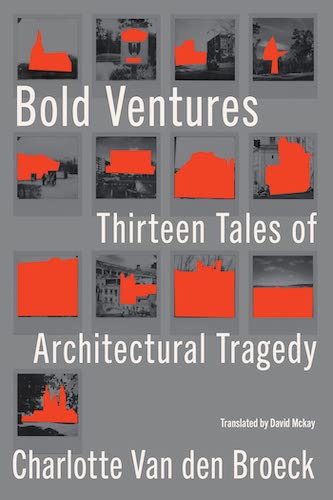 In Bold Ventures: Thirteen Tales of Architectural Tragedy (Other Press), author Charlotte Van den Broeck asks some interesting questions: When is a mistake so all-encompassing that an individual feels he or she can’t go on? What is the line between creator and creation? If the art deconstructs, should the artist as well?
In Bold Ventures: Thirteen Tales of Architectural Tragedy (Other Press), author Charlotte Van den Broeck asks some interesting questions: When is a mistake so all-encompassing that an individual feels he or she can’t go on? What is the line between creator and creation? If the art deconstructs, should the artist as well?
Drawing on a quirky, rabidly stream-of-consciousness style, the Belgian poet explores what some see as the literal do-or-die nature of the creative endeavor, focusing on the conflict between godlike ambition and crushing defeat through the stories of tragic buildings that were fatal to their humiliated architects. She recounts the histories and social contexts of architects who either killed themselves or are rumored to have done so because of their utter humiliation and deflated hubris. All the while, the author shares her own observations about the disgraces and adds in some of her unconventional personal experiences.
Moving from the twisted spire of a church in 17th-century France to the inept design of a mid-19th century Vienna State Opera House and a theater roof that collapsed mid-performance in ’20s Washington, DC, Van den Broeck uses the breakdown of public structures to query how ambitious art and overweening ego intersect. After all, one needs considerable nerve to dream big — and to face disaster. What does suicide say about the relationship between creativity and public disgrace?
Each of the 13 chapters is a short nonfiction story about a time, a place, and some very peculiar personalities. Van den Broeck’s descriptive powers are impressive, her ability to detail historical and social context less so. And her characterizations are disappointing. Are we supposed to have empathy for the failed designers? Or should we simply acknowledge something they didn’t — that failure is an inevitable part of achievement? Many Frank Lloyd Wright projects leaked. Van den Broeck doesn’t supply any convincing answers. The archetypal flight of Daedalus and Icarus intertwines success and failure, overreaching and falling, creativity and suicide. That calls for a subtler approach.
Still, some readers may be intrigued by this deadly design showcase (translated by David McKay) of idiosyncratic architects and designers who couldn’t face failure.
— Mark Favermann
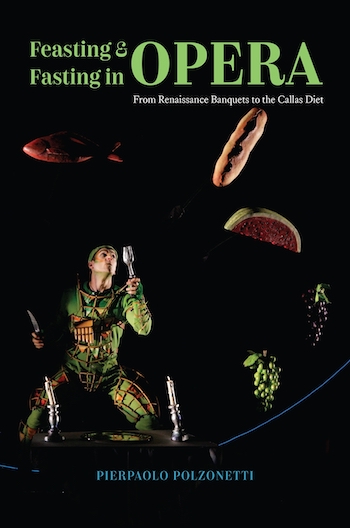 Food is omnipresent in our lives and is connected to the thousand things we do. Yet it is often considered in isolation, and as something either utterly essential for human existence (as in the powerful chapter on grain in Jared Diamond’s rightly renowned Guns, Germs, and Steel: The Fates of Human Societies) or as utterly frivolous (a quality easily noticed in the food pages of daily newspapers).
Food is omnipresent in our lives and is connected to the thousand things we do. Yet it is often considered in isolation, and as something either utterly essential for human existence (as in the powerful chapter on grain in Jared Diamond’s rightly renowned Guns, Germs, and Steel: The Fates of Human Societies) or as utterly frivolous (a quality easily noticed in the food pages of daily newspapers).
A brilliant recent book (University of Chicago Press) by musicologist Pierpaolo Polzonetti (University of California, Davis), Feasting and Fasting in Opera: From Renaissance Banquets to the Callas Diet, demonstrates in delectable prose that food and drink — including how and when they are consumed, and situations in which an individual refrains from eating or refuses to dine with another — are central to a major Western cultural institution: opera. He also traces fascinating trends about whether operagoers were (and are) permitted to eat and/or drink during a performance. The roots of opera, as his early chapters explore, lie in Renaissance banquets, at which sung and danced numbers entertained the aristocrats as they imbibed and nibbled or even stuffed themselves.
The book moves in roughly chronological order, and draws its examples largely from the Italian repertory. This is hardly a limitation, given how central a succession of Italian innovations were to the development of opera elsewhere in Europe. (Handel wrote operas in Italian for London; Mozart, for Munich, Prague, and Vienna.) Thus, Polzonetti can show, in a vivid chart, that food and drink are rarely mentioned in the ultraserious libretti of Pietro Metastasio (1698-1782) but quite often in the comic libretti of Carlo Goldoni (1707-93). Some of Goldoni’s libretti were set several times, by noted composers of Haydn’s generation, including Haydn himself; Metastasio’s were often set dozens of times, by composers from his own day and continuing for a century or more. So whatever went on, or didn’t, in their libretti determined a lot of what one saw, or didn’t, in the opera house.
The book is fascinating throughout, but will likely excite the average music lover particularly when it reaches Verdi and Puccini. (Think of several drinking numbers in La Traviata, Otello, or Madama Butterfly.) Polzonetti has devised, humorously but pointedly, a kind of semiotic code about when food and drink are consumed in Verdi operas, and under what circumstances. I can’t resist quoting a few of his “laws of gastromusicology”: “(1) No meal can be sad; … (3) Sharing a meal or drink is a socially cohesive event; (4) The presence of food or drink excludes immediate catastrophe (unless the food or drink is poisoned); (5) The act of feasting itself is morally neutral, but a feasting group (or individual) is morally negative when contrasted with a fasting group of individuals; (6) A fasting individual is a hero, and a hero is always sober.” The helpful index leads the reader to specific applications of some of these gastromusicological laws.
The book ends with reflections about the shift in operatic culture to an emphasis on the visual, a shift embodied (if that’s the right word) in Maria Callas’s famous diet over the years 1951-54, which made her fashionably slim and thus more acceptably photogenic but also may have hastened her vocal decline.
The book comes with advance praise from scholars, opera director Francesca Zambello, and the marvelous baritone Nathan Gunn, who is shown on the front cover in the Met’s production of Mozart’s The Magic Flute, surrounded by floating goblets and tasty foods that Papageno has just wished for.
— Ralph P. Locke
Rap
MC Yallah skillfully turns her voice into a percussion instrument, running on top, behind, or ahead of the drums.
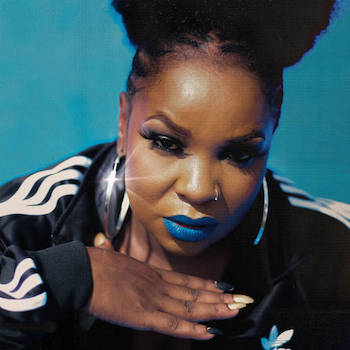 MC Yallah can flow at a speed that would leave most rappers gasping desperately for breath. Such velocity is often justly dismissed by critics as a corny exercise in empty virtuosity, but the Kenyan-born, Ugandan-based hip-hop artist isn’t imitating American “lyrical miracle” MCs. In fact, her music owes little to US versions of the genre, aside from some trap hi-hat fills. Instead, she draws on club genres from Africa, including the 300 bpm pulse of Tanzania’s singeli. She skillfully turns her voice into a percussion instrument, running on top, behind, or ahead of the drums. She also raps in four languages, including the occasional burst of English. A former news presenter who’s been making music since 1999, her profile was boosted by signing with the Nyege Nyege collective – their label Hakuna Kulala is releasing Yallah Beibe.
MC Yallah can flow at a speed that would leave most rappers gasping desperately for breath. Such velocity is often justly dismissed by critics as a corny exercise in empty virtuosity, but the Kenyan-born, Ugandan-based hip-hop artist isn’t imitating American “lyrical miracle” MCs. In fact, her music owes little to US versions of the genre, aside from some trap hi-hat fills. Instead, she draws on club genres from Africa, including the 300 bpm pulse of Tanzania’s singeli. She skillfully turns her voice into a percussion instrument, running on top, behind, or ahead of the drums. She also raps in four languages, including the occasional burst of English. A former news presenter who’s been making music since 1999, her profile was boosted by signing with the Nyege Nyege collective – their label Hakuna Kulala is releasing Yallah Beibe.
Yalllah Beibe is alternately celebratory and ominous. “Sikwebla” starts off joyfully, with MC Yallah laughing. While the beat stays at the same tempo, her voice rises and falls in intensity and speed. The album’s high spirits then cross over into something more foreboding. Death metal is an unlikely hip-hop influence, but Duma singer Mr. Spikeface’s growled chorus on “No One Seems To Bother” owes something to it. (It’s her only song with a full verse delivered in English.) Parts of the album tread close to industrial music, as minor-key electronics trade place with melodies played on tuned percussion. “Big Bung” introduces dancehall through guest MC Rati Gan Era’s verse, while “Baliwa” melds hyperpop’s metallic clang and Gothic organ. “Hera” ends Yallah Beibe on its most adventurous note, laying choral samples on top of complex, shifting rhythms. Even without fully understanding the words, the album’s mood swings are impossible to miss: it sounds like a night of clubbing where anxiety wins out over pleasure.
— Steve Erickson
Rock
Pink Floyd certainly doesn’t reinvent Dark Side of the Moon, but they play with it enough to keep the well-worn tunes interesting.
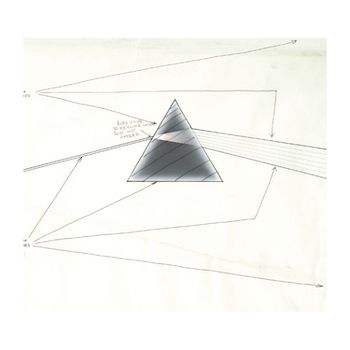
Cover art for The Dark Side of the Moon: Live at Wembley, London, 1974.
By late 1974, Pink Floyd must have been sick of Dark Side of the Moon. When they started playing the unfinished, unrecorded Dark Side in concert nearly three years earlier, it was a way to save the group from boredom and yet another rendition of “Atom Heart Mother.” Once the album was released however, performing it in its entirety, sound effects and all, was something their audience expected of them.
Credit where due, the group doesn’t sound like they’re phoning in the performance of their magnum opus on The Dark Side of the Moon: Live at Wembley, London, 1974. Taken from the Floyd’s four-night stand at Wembley Empire Pool in November ’74, the band is faithful to the record, yet there are moments that could only occur in a live setting. Take the guitar and bass interplay between David Gilmour and Roger Waters during “Money” (not two people known for communicating with each other well, musically or otherwise). Or the extended, ripping version of “Any Colour You Like.” The group certainly doesn’t reinvent Dark Side of the Moon, but they play with it enough to keep the well-worn tunes interesting.
As a listening experience, Live at Wembley, London, 1974 delivers. It would have been interesting, though, had an earlier, pre-album-release live set from 1972 been offered. Or a version of Live at Wembley, London, 1974 that included the non-Dark Side songs the Floyd also played at the Empire Pool, namely the not-yet-finished or recorded “Shine On You Crazy Diamond,” “Sheep,” and “Dogs.” After all, in 1974, those songs were what the Dark Side of the Moon tracks used to be: the new tunes Pink Floyd busted out to save themselves from dying of boredom.
— Adam Ellsworth
As always, the four more or less equally talented songwriters of Sloan play to their well-established strengths across the course of these dozen tracks.
 As I wrote in my Arts Fuse review of their 2018 album 12, “To say that Sloan has a new album out is basically code for ‘the new Sloan album is really good’.”
As I wrote in my Arts Fuse review of their 2018 album 12, “To say that Sloan has a new album out is basically code for ‘the new Sloan album is really good’.”
The most recent validation of this assertion appeared last October in the form of the Canadian quartet’s latest release, Steady (click to purchase via Bandcamp).
As always, the four more or less equally talented songwriters play to their well-established strengths across the course of these dozen tracks, drawing in the process from a seemingly bottomless well of inspiration that has served them without fail for three full decades.
Patrick Pentland’s bailiwick remains poppy, uptempo rock (the lead single “Spend the Day” and “Scratch the Surface”); Chris “Murph” Murphy serves up rocking pop (e.g., “Magical Thinking,” the rip-roaring lead-off track and follow-up single, and the midtempo, piano-driven “Human Nature”); Jay Ferguson — whom I interviewed for the Arts Fuse in 2016 — dishes out glittery, breezy, ’70s-style AM radio fare (e.g., “Dream It All Over Again,” the third extraction, and “She Put Up With What She Put Down”); and Andrew Scott specializes in hazy, andante to moderato compositions that border on the psychedelic (the lockdown-inspired numbers “Panic on Runnymede” and “Close Encounters”).
Spices of variety from individual members come by way of Pentland’s “Simply Leaving” — which he called “the saddest song ever written” — and Murph’s country-flavored “I Dream of Sleep,”
Also in typical Sloan fashion, Steady finds the band proudly evincing their influences: the riffs to “Dream It All Over Again” recall Weezer’s “The Good Life,” Murph’s “Nice Work If You Can Get It” seems to amalgamate the opening salvos of “I Feel Fine” and “Day Tripper,” “Simply Leaving” marches to a deliberate “Be My Baby” beat and briefly references one of my favorite Simon & Garfunkel songs, and Ferguson described “Keep Your Name Alive” as that duo’s “‘Homeward Bound’ in reverse.”
Steady’s 37 minutes brim with seemingly effortless vigor and formidable songcraft. I am not certain exactly where it ranks in a best-to-worst ordering of Sloan’s records, but that’s kind of a moot point since all 13 of them are tied for somewhere among their top five.
— Blake Maddux
Classical Music
The California-based composer’s last several albums have made a point of being stylistically unpredictable, though always expressively resonant.
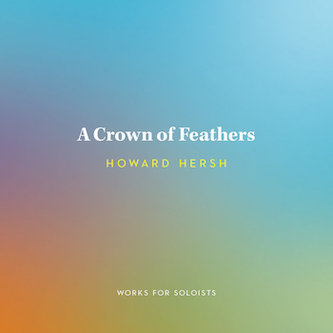 One hardly knows what to expect from a new recording of music by Howard Hersh. The California-based composer’s last several albums have made a point of being stylistically unpredictable, though always expressively resonant. So it goes again with A Crown of Feathers, a short-ish — but approachable and engaging — release that features four pieces for solo instruments.
One hardly knows what to expect from a new recording of music by Howard Hersh. The California-based composer’s last several albums have made a point of being stylistically unpredictable, though always expressively resonant. So it goes again with A Crown of Feathers, a short-ish — but approachable and engaging — release that features four pieces for solo instruments.
The first of these, Solo (for flute), sets the stage for what’s to come: agile, idiomatic writing for the instrument that, for all its bravura pyrotechnics, doesn’t overstay its welcome. Certainly some of the credit for the last quality is due to Tod Brody’s excellent navigation of the score. But it says something of Hersh’s musical chops that Solo’s gamut of technical demands — repeated notes, swirling lines, leaps, breathless atmosphere — don’t become a thing unto themselves.
Ditto for Jitterybug, a spastic effort for solo marimba. Here, again, Hersh’s writing (vigorously executed by Daniel deSimone) spans the instrument fluently: chromatic gestures and diatonic riffs sit uneasily (but playfully) side-by-side.
Deeper expressive substance arrives in the concluding pair of pieces.
The first of these, I Had to Go Down in the Mine to Climb Up to the Sky, draws on the unconventional combination of solo piccolo and 16 prerecorded piccolos. Here, the taped element functions as a true accompaniment to the soloist, by turns haunting, dancing, and lyrical. Though the distinction between Lois Bliss Herbine’s “live” solo and the recorded part (also done by Herbine) is impossible to discern, I Had to Go Down’s serene ending is surprisingly affecting.
Likewise intense is Liana Bérubé’s account of the title track, itself a memorial to Jewish communities obliterated in the Holocaust. The piece is based on a trio of Yiddish songs that unfold with a bittersweet mix of storminess, lyricism, and pathos, all of it deeply felt.
— Jonathan Blumhofer
Film
People from marginalized nations who speak out — detailing how the changing climate is making their existence increasingly difficult, even impossible — are emissaries from the future.

Anita Chitaya and director Raj Patel (center) in a scene from The Ants and the Grasshopper. Photo: Kartemquin Films
The worsening climate emergency, particularly among underdeveloped nations, is spawning a moving but inevitably problematic genre of documentary. In these films the have-nots gently confront the haves. How will the latter respond when they hear that the heating world is destroying the lives of the poor and helpless? Can words from the afflicted help make people in rich countries realize they are responsible for the warming planet? And to understand that moving so slowly to ameliorate the misery driven by a changing climate is only compounding future damage? The underlying message of these docs is that, at some point, the party will be over for the fortunate — even for those who, at the moment, are lucky enough (or wealthy enough) to be isolated from the front lines of the tragedy. But they refuse to see it. People from marginalized nations who speak out — detailing how the changing climate is making their existence increasingly difficult, even impossible — are emissaries from the future.
The Ants and the Grasshopper (directed by Raj Patel and Zak Piper) is an earnest and touching attempt to bring people living in disastrous conditions face to face with members of the developed nations who are indifferent to the problem. In this case two women from Bwabwa, a village in Malawi, visit farmers (mostly organic) in the United States to talk about the climate crisis. The pair are charming, particularly Anita Chitaya, and there are some inspiring scenes, in a food desert in Detroit and elsewhere, of Black farming. The white farmers (all noncorporate) are empathetic to the ladies’ existential plight: the river that is the major source of water for the area is drying up. But a visit to the American participants two years later suggests that, until they believe that climate change is affecting them, their resistance to significant change is unshakeable.
These films often stick to small fry: the only power broker here is Senator Jeff Merkley, and we don’t hear anything of what went on between him and Chitaya. We are uselessly informed that Merkley was one of the sponsors for the Green New Deal, which went nowhere. So the overall spirit of the film, despite its attempts to be reassuring, is chastening, to say the least. What might make a difference? Levels of suffering in the world will have to rise much higher and Chitaya will have to return to America with an army of protestors willing to surround banks, politicians, and fossil fuel facilities. Still, Chitaya is an endearingly determined heroine and there is some nicely shot footage of the vistas around Bwabwa. Also, there are signs that traditional gender prejudices are breaking down in the village. Once resistant, guys are beginning to do some of the cooking, cleaning, gardening, and farming. We see that local feminist groups are partly responsible for the transformation, but you can’t help but wonder if the guys are also shaping up because things are becoming so damned desperate. The patriarchy might be among the casualties of the Climate Crisis.
— Bill Marx
Tagged: A Crown of Feathers, Adam Ellsworth, Blake Maddux, Bold Ventures: Thirteen Tales of Architectural Tragedy, Charlotte Van den Broeck, Feasting and Fasting in Opera, Heart Sutra, Howard Hersh, Jonathan Blumhofer, Mark Favermann, MC Yallah, Mike & Dorothy Longo, Pierpaolo Polzonett, Pink Floyd, Sloan, Steve Provizer, The Dark Side of the Moon: Live at Wembley, Yallah Beibe
